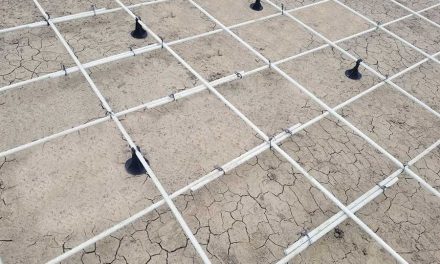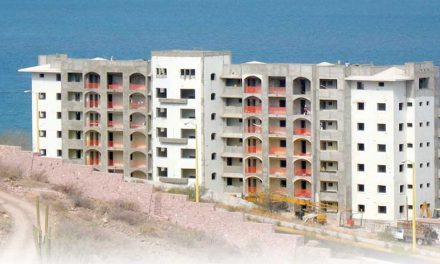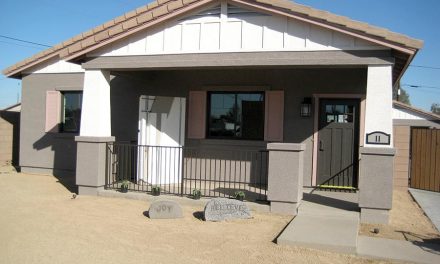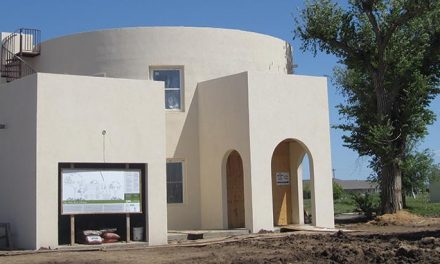Six-inch core ICF is nine times stronger than wood-frame construction, and eight-inch core is significantly stronger still.
The two most commonly used ICF sizes have six-inch and eight-inch cores. I’m frequently asked about the advantages and drawbacks of each, and have put together the information below based on my experience over the past 15 years as a Nudura distributor in the state of Texas.
Strength Considerations
Basic six-inch core is utilized for load bearing walls often as high as four or five stories. Your basic or typical eight-inch core may be utilized as a load bearing component to eight or even ten stories.
Both the six-inch core and eight-inch core rebar schedule may be modified to include additional rebar and thus exceed typical engineering height to width ratios.
Six-inch core has been designed to withstand 250 miles per hour winds although this level is much easier to achieve with the eight-inch core.
Typical 3,500 psi concrete six-inch core provides 252,000 pounds per linear foot compressive strength while the eight-inch core is 336,000 pounds per linear foot compressive strength.
Both are bullet resistant, however, the eight-inch core is more likely to stop .50-caliber rounds. Both are projectile resistant even in winds more than 250 miles per hour.
Compared to standard wood 2×6 construction, the six-inch core is in excess of nine times stronger and the eight-inch core is significantly stronger still.
Both core sizes may often offer insurance advantages as they are considered concrete construction.
Eight-inch cores and thicker are
often used below grade (underground), while the six-inch core is generally not utilized below grade.
Thermal Performance and R-value
Both the six-inch core and eight-inch core have almost identical R-values of approximately R-24 (continuous). This is because concrete has virtually no laboratory R-value. However, despite the simplicity or limitations of the R-value laboratory measurement, the eight-inch core will outperform the six-inch core due to it having significantly more heat capacity (commonly called thermal mass).
The performance difference between the six-inch and eight-inch cores is quantifiable but not as great as say comparing the 4” core to the six-inch core. Basically, both the six-inch and eight-inch core have enough thermal mass to provide comfort levels not possible with low mass walls. For example, wooden 2×6 construction weighs approximately two pounds per square foot. An ICF wall with a six-inch core approximately 74 lbs./sq.ft. and the eight-inch core approximately 99 lbs./sq.ft. To sum this up, walls with high thermal mass will be very slow to react to weather events and/or temperature swings.
Fire Rating
Both ICF core sizes have UL classifications that exceed four hours according to UL 930. The difference here is the six-inch core barely achieves the four hour rating, but it’s easily reached with the eight-inch core. See Nudura UL 930 for details.
Noise Reduction
Sound transmission STC (Sound Transmission Class) is 50 for six-inch core and 55 for eight-inch core. Both far exceed conventional construction, which has an value of STC 37. Like decibels, STC is not a linear measurement so a small difference in value is significant. Nevertheless, you basically cannot hear sound through either the six-inch core or eight-inch core. An STC rating of 55 is close to what high quality multi-screen cinemas use between theaters.
Cost
The cost of Nudura’s six- and eight-inch core ICFs is identical. However, one cubic yard of concrete in the six-inch core will fill 57 square feet of wall, while one yard of concrete in the eight-inch core will fill only 40.5 square feet. Thus, concrete costs are 30% higher for the eight-inch core wall.
Steel costs are slightly higher too. The engineering ratio of minimum rebar to concrete will generally require that the eight-inch core utilize #5 bar at 18-inch on center horizontals, instead of the common #4 bar at 18-inch on center horizontals with the six-inch core. Vertical rebar at 16-inch on center is often increased to #5 in the eight-inch core, rather than the typical #4 steel utilized in the six-inch core.
Bracing and bucking for windows and doors is slightly more involved from an installation perspective for the eight-
inch core.
Concrete consolidation is similar but slightly easier in the eight-inch core than the six-inch core.
Here in Texas, the turnkey installation of eight-inch core usually exceeds the six-inch core by approximately $1.40 more per square foot.
Cameron Ware is Nudura’s regional manager for Texas, Oklahoma, Arkansas and Louisiana and is working to establish new distributors in these states. He can be reached via email at cware@nudura.com or through his website at www.Futurestone.com.














Great content Mr Ware. Thanks for the information.